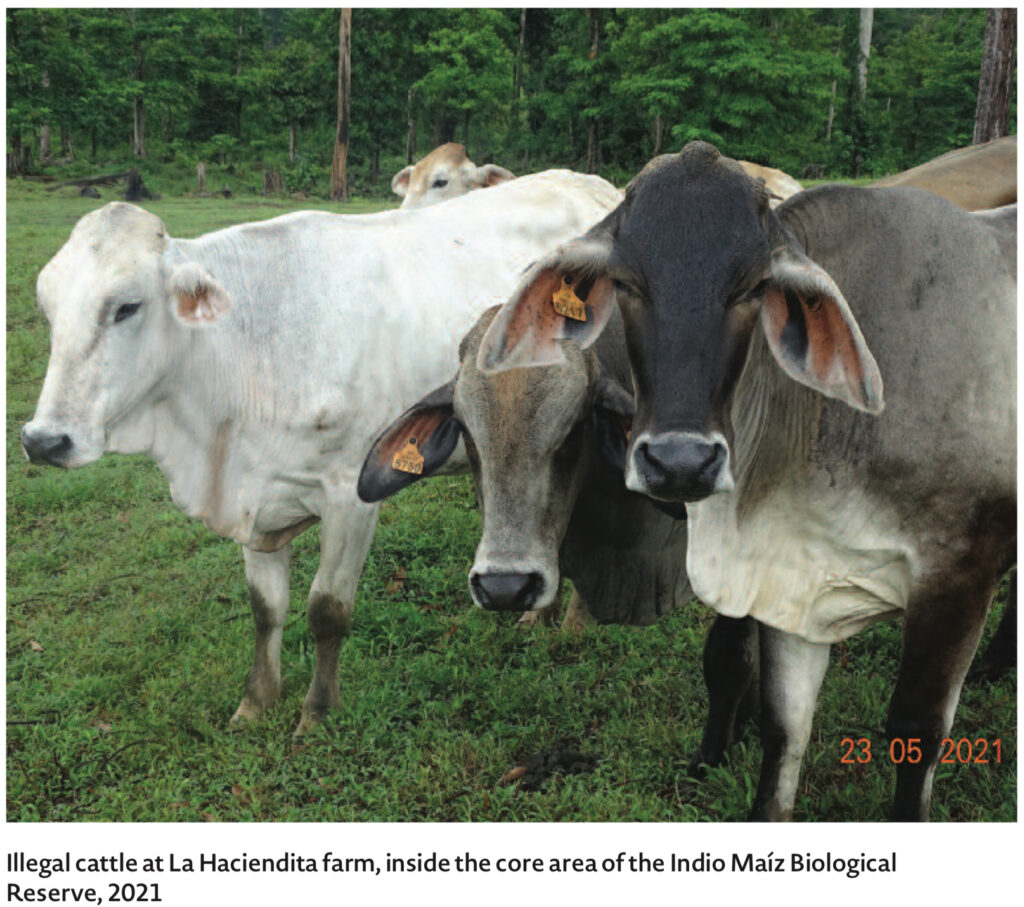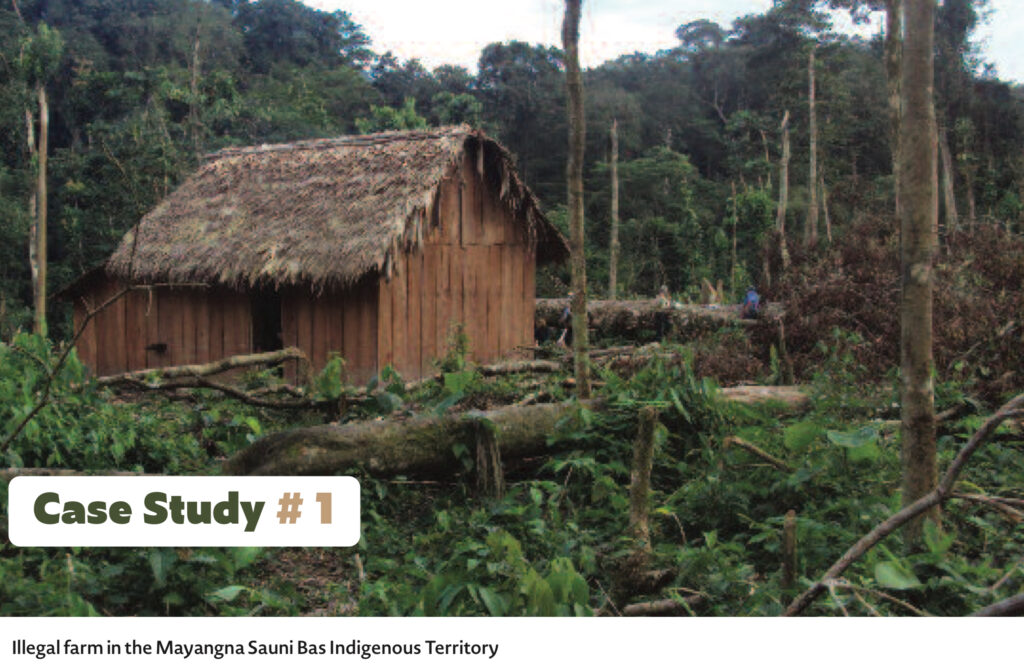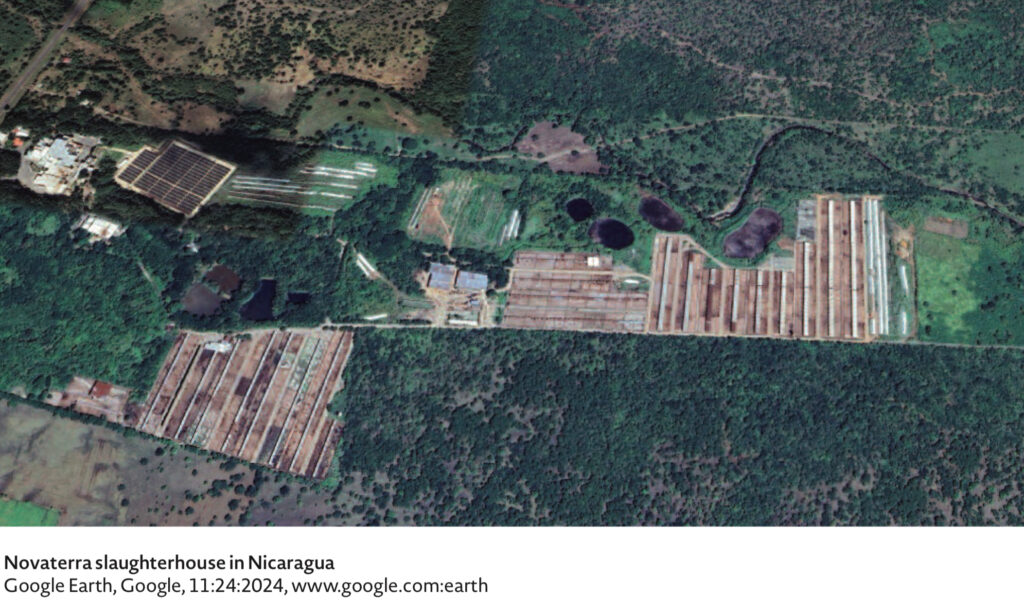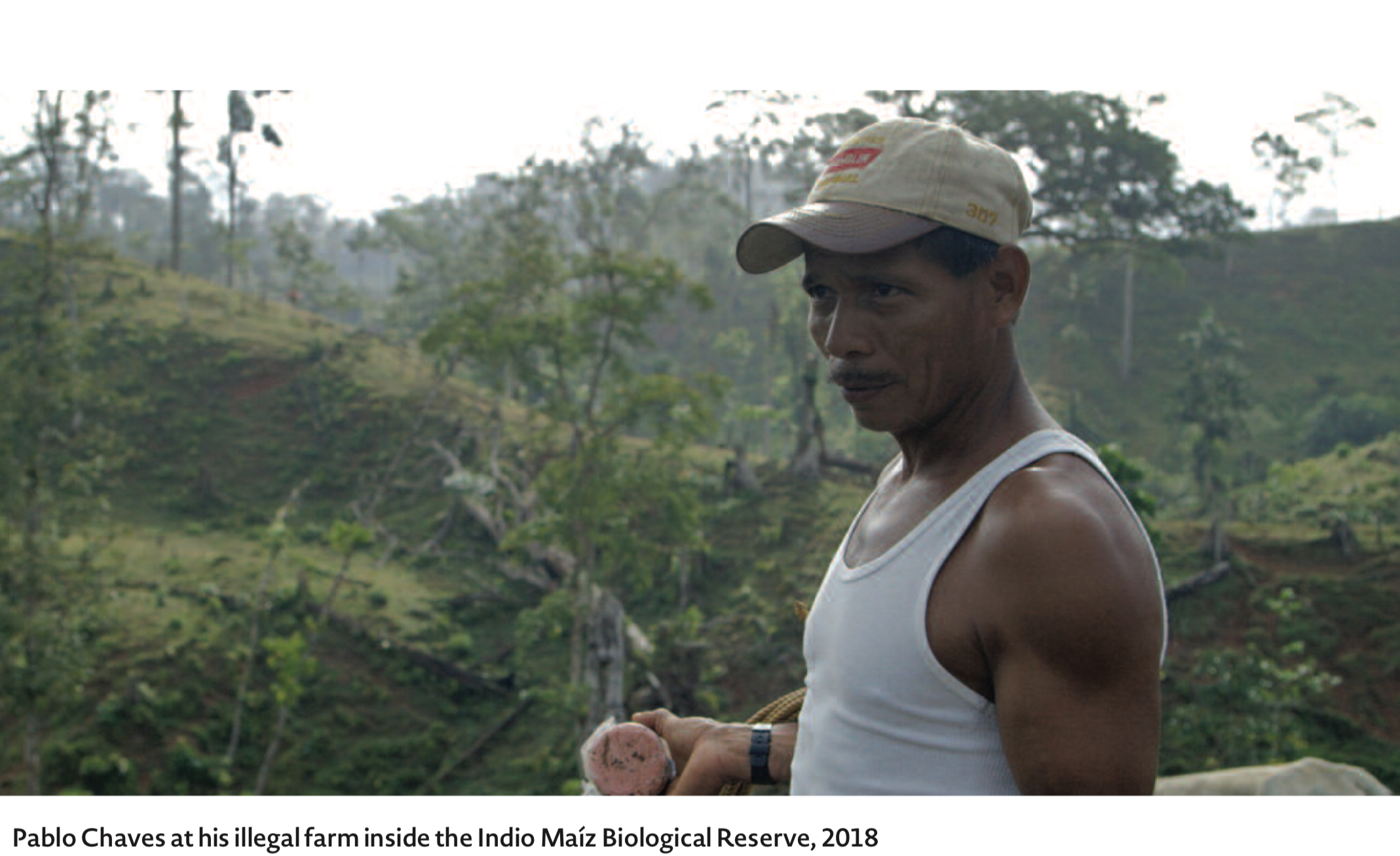In the heart of the Nicaraguan rainforest, cattle are being branded inside a UNESCO biosphere. They’re herded across Indigenous land torched by settlers, passed through corrupt checkpoints, and escorted straight into the export economy. Branded bulls raised on illegal pastures are now beef patties served in suburban grocery stores across the United States.
This isn’t a story about loopholes. It’s a story about design.
The Bosawás Biosphere Reserve, one of the most ecologically critical and heavily invaded forest regions in Central America, is under siege. Specifically, the Mayangna Sauni Bas Indigenous territory within Bosawás has become the front line of Nicaragua’s conflict beef crisis. Armed settlers—colonos—are driving Indigenous families off their land, clearing forest with fire, and setting up clandestine pastures.

But what turns this violence into export profit is a second tier of players: the middlemen. These aren’t ranchers. They’re professional intermediaries, legally registered buyers who launder cattle into the supply chain. They operate with transport permits, forged documents, and a willing slaughterhouse network that doesn’t ask questions it knows not to ask.
In one region called Guzma, investigators photographed branded bulls raised on illegally cleared Indigenous land. These cattle were then sold to intermediaries like Eliseo Ibarra and Mateo Cárcamo—both linked to formal legal markets. From there, the bulls moved into slaughterhouses approved for export, including Novaterra and SuKarne that remain USDA-eligible for U.S. beef shipments.
Every animal had a paper trail. Every paper trail was a lie.

Welcome to Guzma: Ground Zero for Conflict Beef

The Nicaraguan government insists its cattle can be traced from “farm to fork.” The truth is closer to forest to fiction.
The traceability system—SNTG—isn’t electronic. It’s paper-based. Ranchers and intermediaries fill out handwritten “guías de movilización” (transport guides), which can be purchased, forged, or borrowed. There is no real-time tracking. No satellite verification. No public audit of cattle movements—as the IPSA agency itself demonstrates.

That’s how three bulls born in a UNESCO-protected biosphere ended up on the kill floor of slaughterhouses certified for U.S. export, as documented with photos, GPS, and receipts.
In one case, a bull photographed in Guzma, its brand clear and verified, was moved using documents that claimed it came from a legal farm. The buyer, Eliseo Ibarra, transferred the animal to a municipal market in Siuna—just outside the protected zone. IPSA, the government agency responsible for animal health and traceability, accepted the paperwork without question.

Another bull followed the same route, sold to Mateo Cárcamo, who rerouted it through Samaria—a known hotspot for laundering cattle. In both cases, the slaughterhouse issued receipts that show the animals were processed for export.
This isn’t an isolated failure. It’s a feedback loop. IPSA field agents regularly accept forged documents. Slaughterhouses don’t verify origin beyond what the paper says. No system exists to audit indirect suppliers—the most common point of entry for illegal cattle. And as of the most recent 2024 reforms, nothing has changed.
Cattle laundering isn’t a risk. It’s the business model.
From Burned Land to U.S. Shelves

That model has consequences far beyond Nicaragua.
In 2024, the country lost over 74,000 hectares of primary forest—more than three-quarters of its total annual deforestation—within Bosawás alone, according to Global Forest Watch satellite analysis. University of Maryland data confirms that 40% of that loss was from fire, overwhelmingly attributed to settler operations clearing pasture via GLAD fire alerts.
While the forest burned, cattle from these same zones flowed into the U.S. beef supply. Nicaragua remains eligible to export both fresh and frozen beef under USDA guidelines. Despite multiple Central American countries facing partial bans due to biosecurity concerns, Nicaragua’s shipments continued.
The method of import makes tracing impossible. Lean trimmings—especially prized from grass-fed animals—are imported in bulk and blended into domestic ground beef. Once blended, there is no label. No trace. No legal obligation to declare origin. Under current USDA rules, that burger can be sold as “Product of USA.”

The most explosive development came in the form of a parasite.
In early 2025, the New World Screwworm outbreak exploded across Central America. Nicaragua, with its already weak animal surveillance systems, became a transmission corridor. The same regulatory agency—IPSA—that fails to audit cattle origins was also responsible for monitoring animal health. It failed on both fronts.
By November 2025, the outbreak had surpassed 130,000 animal cases and nearly 1,000 human infections, per the latest CDC update. The United States suspended live animal imports from Mexico, as detailed on the USDA APHIS screwworm page. But frozen beef from Nicaragua never stopped flowing. While live cattle faced health checks and border closures, boxed meat carried on—untested, untraceable, and increasingly suspect.
This is no longer just an environmental story. It’s a zoonotic risk.
The same broken institutions laundering beef out of conflict zones are now enabling a parasite capable of infecting North American livestock and people.
The Law Won’t Touch It
The legislative failure is deliberate.
Despite overwhelming public support for truth-in-labeling laws, Mandatory Country of Origin Labeling (MCOOL) remains dead. Senator John Thune and Senator Cory Booker reintroduced the American Beef Labeling Act (S.421) in February 2025. It hasn’t moved. House bills introduced by Reps like Harriet Hageman have stalled or been buried in committee.
Why? Because the National Cattlemen’s Beef Association (NCBA), which receives tens of millions annually from USDA checkoff funds, lobbies aggressively against MCOOL. Their justification? WTO compliance. Their motive? Packer protection.
Meanwhile, over $400 million in Nicaraguan beef is flowing into the U.S. annually, unlabelled and blended into ground products from coast to coast.
The same packers who oppose labeling are the ones buying the trim.
The same regulators who promise traceability are the ones accepting forged documents.
And the same companies that preach sustainability are sourcing from slaughterhouses with verified ties to deforestation.

America’s Beef System Has Blood on Its Hands
This is no longer about whether illegal cattle are entering the supply chain. They are. It’s been proven. Photographed. Documented in the full Re:wild investigation as well in Beef News own investigations.
The real question is: How long will the USDA pretend not to know?
Imported rainforest beef, raised on burned Indigenous land, passed through corrupted slaughterhouses, and blended into your supermarket burger is not a foreign story. It’s a domestic one.
The labeling system is broken. The audit system is rigged. And the price of cheap ground beef is ecological collapse, Indigenous displacement, and now—flesh-eating parasites tracked by the CDC.
No label. No warning. No excuse.
America is eating conflict beef. And the system was built to make sure no one could prove it.
That’s why we’re building a new one at BeefMaps.com.



0 Comments